Hvordan astronomer jagter nye verdener i TESS-data
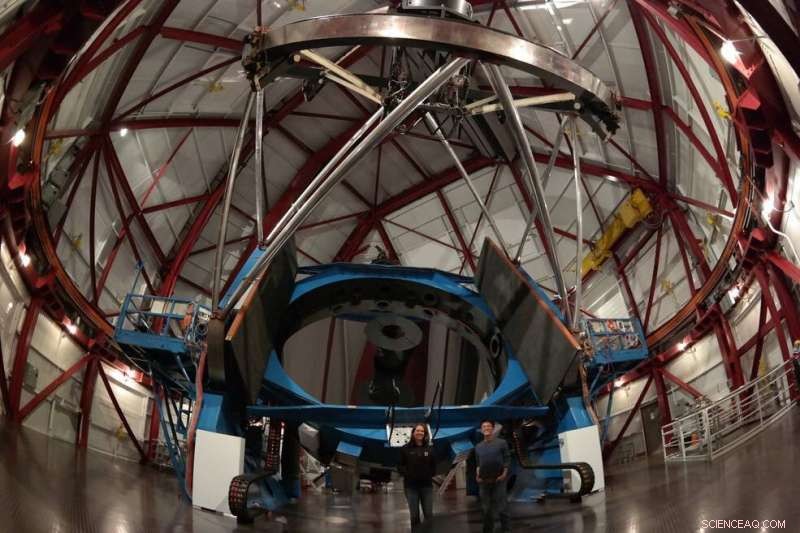
Astronomerne Johanna Teske og Alex Ji ved Magellan II-teleskopet i Chile. Kredit:Cindy Hunt
Mens lyserød væske sivede rundt om hendes sko, astronom Johanna Teske begyndte at føle sig syg. Hun havde ledt efter nye planeter med Planet Finder Spectrograph, et astronomisk instrument, der ligner et køleskab i industriel størrelse monteret på Magellan II-teleskopet. En nat i oktober 2018, en slange, der fører til instrumentet sprængte, forårsager, at pink kølevæske spildes på følsomme dele af instrumentet og den omgivende platform. Ville Teskes søgning blive ødelagt?
Teske bruger Magellan II-teleskopet ved Las Campanas-observatoriet i Chile til at lokalisere planeter uden for vores solsystem, eller exoplaneter, og find ud af, hvad de er lavet af. Til dato, mere end 4, 000 exoplaneter er blevet opdaget, men videnskaben har vist, at der må være milliarder, eller endda billioner, alene i vores galakse. NASAs nyeste planetjæger, Transiting Exoplanet Survey Satellite (TESS), søger efter mulige planeter omkring nærliggende klare stjerner.
Mange hold af videnskabsmænd rundt om i verden søger i øjeblikket TESS-data igennem, at vælge stjerner, der kunne være lovende at observere fra jorden og booke tid ved kraftige teleskoper for at følge op på nye planetkandidater. Kapløbet er i gang for at se, hvilke af disse TESS-signaler, der repræsenterer en slags bedrager, og som peger på rigtige nye verdener.
Som NASA Hubble-postdoktor ved Carnegie Observatories i Pasadena, Californien, Teske var spændt på at deltage i dette løb. Hendes gruppe modtog NASA-midler til at lede efter planeter med tre gange Jordens radius eller mindre, som ville omfatte ulige planeter kaldet "superjorde". Superjorden menes at være stenet ligesom Jorden, men lidt større end vores planet. I oktober 2018, Teske og kolleger påbegyndte TESS opfølgende observationer for første gang. Men omkring midtvejs i deres to-ugers løbetur, i deres klareste nat, røret sprængte.
Kunne røret blive ordnet og rodet ryddet op hurtigt nok til at spare resten af Teskes observationstid? Ville hun og hendes team indsamle værdifulde data om exoplaneter?
Hvorfor planetjagt fra jorden er afgørende
Teskes dramatiske nat i Chile er ikke typisk, men illustrerer, hvordan søgning efter exoplaneter fra jorden kan blive kompliceret af jordiske bekymringer. Udover det lejlighedsvise mekaniske problem, astronomer må kæmpe med vind, regn, sne, skyer og generel atmosfærisk turbulens - som alle kunne ødelægge en hel nat med skyser. Månen byder også på udfordringer:Mens TESS-stjerner generelt er lyse og kan observeres i "lys tid" - dvs. når Månen er omkring trekvart fuld – astronomer, der ser på meget svage stjerner eller andre galakser, skal vente på "mørketid", når der er lidt eller intet måneskin. Og, da astronomer kun kan observere om natten, de må give afkald på søvn i timer med dyrebart mørke.
Men jordbaserede teleskoper er afgørende for at bekræfte eksistensen af planeter, som TESS og andre rumteleskoper finder, og for at lære mere om dem. TESS, ligesom den rumbaserede planetjæger Kepler, hvis mission sluttede i 2018, stirrer på stjerner over perioder, måler hvor lys stjernen er med få minutters mellemrum i uger ad gangen. Et fald i den lysstyrke kunne repræsentere en begivenhed kaldet en "transit, "hvor en planet passerer foran sin stjerne. Men dykket kunne lige så godt komme fra en anden stjerne, eller være en anden form for forbigående fænomen, der forekommer på stjernen eller i detektorelektronikken.
Forskere må henvende sig til jordbaserede teleskoper for at finde ud af dette. Da Kepler sendte data tilbage, der tydede på tusindvis af nye planeter, astronomer organiserede sig for at følge op på dem, også. Resultaterne førte til erkendelsen af, at der er flere planeter end stjerner i Mælkevejen.
"Lysstyrkemålingerne fra rumfartøjet er kun det første skridt, " said David Ciardi, astronomer at the California Institute of Technology, Pasadena. "You need a dedicated ground program to vet and clarify what you see. Without the ground data, you can't understand what TESS has seen."
I nogle tilfælde, there may be data collected from a star in years past that contain the information necessary to confirm a planet candidate—such as in the case of TESS's first confirmed planet Pi Mensae c. Ellers, astronomers need fresh observations to learn all they can about these alien worlds.
And because they are accessible to human hands, ground-based telescopes can be upgraded, fixed and re-tooled much more easily than space observatories. I nogle tilfælde, ground-based telescopes have higher resolution for taking images of stars than space telescopes.
"We have a lot of questions about every single planet, " said Lauren Weiss, the Parrent Postdoctoral Fellow at the University of Hawaii at Manoa. "There are a lot of small planets that we're really excited about, but in order to answer all of these questions, we have to use a variety of new tools and techniques."
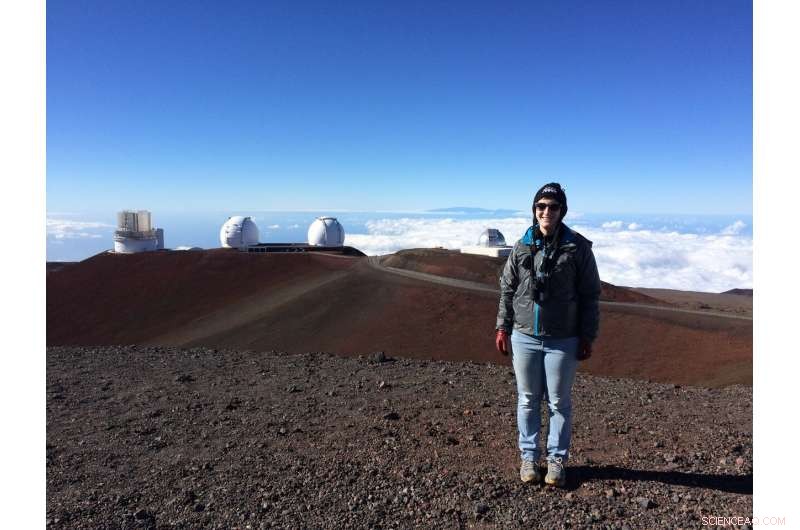
Astronomer Lauren Weiss at the W. M. Keck Observatory in Hawaii. Credit:B.J. Fulton
Ground-based follow-up is more critical than ever now that astronomers are gearing up for NASA's upcoming James Webb Space Telescope, which will study exoplanet atmospheres with greater sensitivity than any observatory yet. Webb will look for the fingerprints of chemicals in exoplanet atmospheres, including those allowing life as we know it to thrive. But because Webb will target many different scientific questions about the universe, it will only have a portion of its time for looking at exoplanets. Astronomers need to start finding the most promising targets now so that they're ready to explore them further as soon as Webb starts operating.
Men først, scientists need to be sure those planets are really there.
What Ground-Based Telescopes Do
One of the first facts a scientist needs to know about a possible exoplanet is:Which star does the planet orbit? This fundamental puzzle piece isn't immediately obvious from telescope data because all astronomers can see are individual pixels from the telescope camera, each corresponding to an area of the sky. If two stars appear extremely close to each other in these data, it may not be obvious which star seems to be dimming because of a transiting planet.
"The ground-based efforts can determine which star is the source of the signal, " said Knicole Colon, astronomer at NASA's Goddard Space Flight Center in Greenbelt, Maryland. "That's absolutely a major part of the ground-based follow-up:Which star is the host?"
Derefter, there's a separate process of getting the mass of the planet. No one can put a planet on a scale. But a planet's mass is often determined through the "radial velocity method", or looking at how the star wobbles ever so slightly in response to the gravity of its planets. I øjeblikket, only ground-based telescopes are capable of exoplanet radial velocity measurements. Carnegie's Planet Finder Spectrograph, which Teske uses at Las Campanas in Chile, is just one instrument that can determine a planet's mass. The forthcoming NEID spectrograph, a collaboration between NASA and the National Science Foundation, at Kitt Peak Observatory in Arizona, is another example.
The mass of a planet is different from its size, which refers to its diameter. Scientists measure diameter by looking at how much the brightness of the host star dims during the transit.
Combining the size and the mass of the planet, scientists can determine its density—a big indicator of whether it is rocky, like Earth, gaseous, like Jupiter, or something in between, which would be unlike any of the planets we have in our solar system.
Astronomers also use Earth-based telescopes to thoroughly study the stars themselves to determine planet properties. Any size or mass measurement of a planet can only be calculated relative to the size and mass of its host star. And if the star is part of a double-star or multi-star system, that could change the calculations entirely unless astronomers can determine the fraction of light originating from other nearby stars, and factor it into their calculations.
With so many different properties of star and planet observations to consider, it often takes large groups of scientists working with different instruments to arrive at even a basic understanding of a planetary system.
"That's why these teams are so big, " Weiss said. "Each of us has to address a very specific question, or set of questions, related to the validity of the planetary hypothesis, and the fundamental properties of the star and planet."
A planet that Weiss helped discover, TOI-197b (also called HD 221416b), is a particularly good example of how a giant collaboration of people using observatories in space and on the ground can paint a picture of a new world. The study announcing it to the world, published in April 2019, was authored by more than 100 people representing five different continents. Astronomers found out a lot about the age and radius and mass of the star because of the special way they have been able to examine its properties.
"The star is ringing like a bell from internal pressure waves and gravity waves inside the star, " Weiss said. The study of these waves, called asteroseismology, is a powerful tool for characterizing a star.
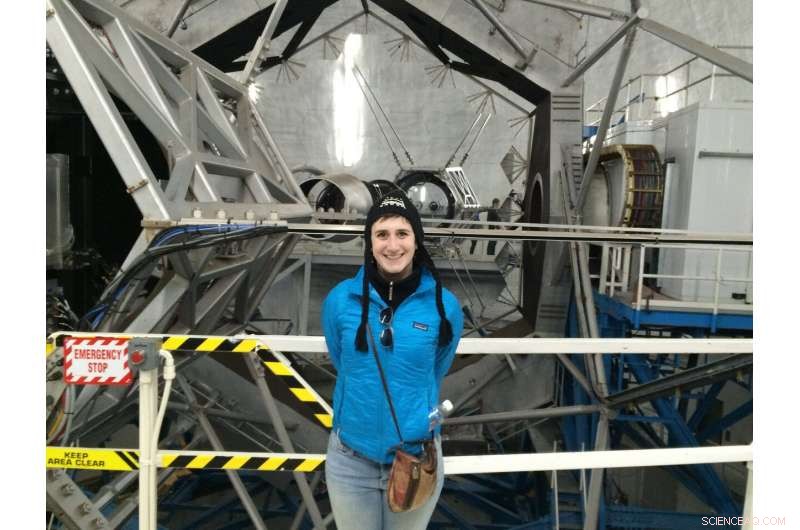
Astronomer Lauren Weiss looks at planets outside our solar system using the Keck Telescope in Hawaii. Credit:B.J. Fulton
Multiple observatories worldwide including Keck Observatory at Mauna Kea in Hawaii, where Weiss was situated, contributed observations. Dan Huber, the lead author, wrangled all of the different datasets together. Ashley Chontos at the University of Hawaii created a model to reconcile both the transit and radial velocity measurements. By matching their model to the observations, astronomers were able to put together a picture of the planet that could explain all of these different signals seen in all of the different telescopes.
Astronomers found that, at 63 times the mass of Earth, this planet is a little bit denser than Saturn. But they call it a "hot Saturn" because its orbit around its star is only 14 days (by contrast, Saturn makes a loop around our Sun every 29 years). There is nothing quite like it in our solar system.
A New Planet, and Even Another
Så, what happened with Teske's planet search after the burst pipe incident at Las Campanas? The search for new planets motivated her to snap into action. "Pretty quickly I moved into 'how do we fix' this mode, " she recalled. "It was a big team effort for sure."
Heldigvis, the observatory staff was able to resolve the issue in a few hours. After they finished mopping and carefully checked over the instrument, Teske and colleagues resumed their exploration of exoplanets that very night, and continued for the rest of their scheduled week. Despite overnight observing for about two weeks during the telescope run, Teske didn't go home to Pasadena afterwards—she boarded a plane for Washington, D.C., where she ran a marathon.
Their observations from that trip helped scientists determine the mass of a planet around a star called HD 21749 or GJ 143. This so-called "sub-Neptune" planet is about 2.6 times the diameter of Earth and likely gaseous, but smaller than any gas giant in our solar system.
Combining the Las Campanas observations with data from TESS and archival data from the HARPS instrument at La Silla, Chile, astronomers were able to confirm this exoplanet and determine its mass, which is more than 20 times that of Earth.
"While we were looking at the data for that planet, we found that there is another planet in the same system around the same star; it's about Earth's size, " said Diana Dragomir, also a NASA Hubble Postdoctoral Fellow at MIT who was the first author on a study of this system, and part of the observing team with Teske at Las Campanas. "It's a nice demonstration that TESS can indeed find Earth-size planets."
During the same observing run, Teske and colleagues also got some measurements of Pi Mensae c, the very first planet confirmed in TESS data, that may help get a better handle on its mass. With more data left to sift through, discoveries may be yet to come from that same observing run in October 2018.
Since TESS recently turned its gaze to the northern hemisphere of the sky, the Chilean telescopes will be out of range for much of the next batch of data. That gives Teske and collaborators time to go back through what they've done so far, and figure out which southern TESS stars they want to keep following over the next two years. Their goal is to find out more about super-Earth and sub-Neptune exoplanet populations by establishing masses for such planets as precisely as possible.
At nearly 8, 000 feet up, Las Campanas isn't high enough to make Teske feel dizzy from the altitude, but high enough that she might get out of breath from walking fast. A variety of wildlife, like foxes and rabbit-like animals called viscachas, sometimes approach the dome as Teske and her collaborators explore the galaxy. She knew she wanted to be an astronomer around age 10 or 11 when she saw the movie "Contact, " based on the book by Carl Sagan, and related to the main character's drive and curiosity. I dag, observing in Chile is one of Teske's favorite parts of her job.
"I am getting to see things that no one else is seeing. It's quiet, and it's just me and the stars, " Teske said. "I hesitate to use the word 'magical'—but it's analogous to that."
Sidste artikelFørste DJ i rummet
Næste artikelStjerneudvikling i realtid opdaget i den gamle stjerne T Ursae Minoris
 Varme artikler
Varme artikler
-
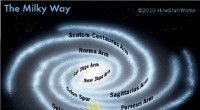 Hvad er Mælkevejen?Mælkevejdiagram © 2010 HowStuffWorks.com Kort sagt, Mælkevejen er dit hjem. Du lever på en planet, der kredser om en central stjerne, og denne stjerne er kun en af 200 til 400 milliarder bundet af
Hvad er Mælkevejen?Mælkevejdiagram © 2010 HowStuffWorks.com Kort sagt, Mælkevejen er dit hjem. Du lever på en planet, der kredser om en central stjerne, og denne stjerne er kun en af 200 til 400 milliarder bundet af -
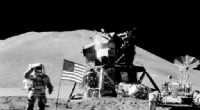 Pence lover ny æra i amerikansk rumforskning, men få detaljerUSAs vicepræsident Mike Pence lovede at sætte astronauter på månen for første gang siden Apollo -missionerne i 1960erne og 1970erne - men gav ingen specifikationer USAs vicepræsident Mike Pence lo
Pence lover ny æra i amerikansk rumforskning, men få detaljerUSAs vicepræsident Mike Pence lovede at sætte astronauter på månen for første gang siden Apollo -missionerne i 1960erne og 1970erne - men gav ingen specifikationer USAs vicepræsident Mike Pence lo -
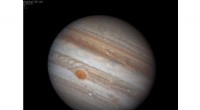 Billede:Jupiter den 25. februar 2017Kredit:D. Peach/Chilescope-teamet Jorden er ved at passere mellem Solen og Jupiter, placerer kæmpeplaneten over for Solen den 7. april. Denne begivenhed kaldes opposition af astronomer, og finder
Billede:Jupiter den 25. februar 2017Kredit:D. Peach/Chilescope-teamet Jorden er ved at passere mellem Solen og Jupiter, placerer kæmpeplaneten over for Solen den 7. april. Denne begivenhed kaldes opposition af astronomer, og finder -
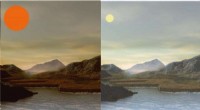 Fotosyntese under lysforhold forskellige fra JordenKunstnerens indtryk af en beboelig planet omkring M-dværge (venstre) og urjorden (højre). Overfladen på M-dværgplaneten er oplyst af synligt lys. På den anden side, lignende lysforhold forventes under
Fotosyntese under lysforhold forskellige fra JordenKunstnerens indtryk af en beboelig planet omkring M-dværge (venstre) og urjorden (højre). Overfladen på M-dværgplaneten er oplyst af synligt lys. På den anden side, lignende lysforhold forventes under
- Ny rapport hævder brudt system svigter migrantarbejdere, der lider af løntyveri
- Udfiskning af de dårlige æbler:Ny kvantitativ metode til at vurdere fødevaresikkerheden
- Forskere dokumenterer den første brug af majs i Mesoamerika
- Aktive galakser peger på ny fysik af kosmisk ekspansion
- Forskere skal udforske smeltevand i Grønland Koldkrigslejr
- Hvorfor al den super-brum om supermånen?


